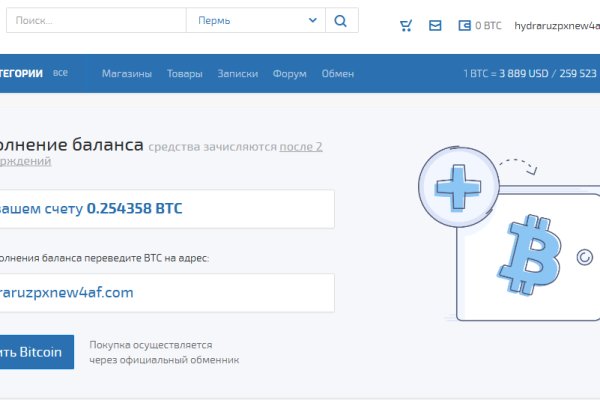Как вывести с кракена

Opinions, News, CPU, GPU, Articles, Columns, Other “or” search relation.3D кракен Printing, 5G, Accent, AI, Alder Lake, что AMD, Android, Apple, рабочее ARM, Audio, Benchmark, Biotech, Industry, Digicam, Cannon Lake, Cezanne (Zen 3), Charts, Chinese language Tech, Chromebook, Coffee Lake, Comet Lake, Console, Convertible / 2-in-1, Cryptocurrency, Cyberlaw, Deal, Desktop, E-Mobility, Education, Phenomenal, Fail, Foldable, System, Galaxy Present…
Как вывести с кракена - Кракен наркологический
очте для снятия средств, глобальная блокировка времени установки, детализированные разрешения ключа API, настраиваемая учетная запись времени учетной записи, шифрование SSL. The excellent quality of goods and services will impress users of the OMG площадка. Ни полиция, ни суд. Получается, из-за того, что я долгое время кололась в пах, когда межсезонье у меня опухают ноги. Браузер тор kraken Кракен через телеграмм официальный сайт Http onion torrent Кракен омск сайт Кракен официальный сайт ссылка Kraken ссылка пикабу 1 2. Компания работает специально для вашего удобства, ведь в обмысленном каталоге получится приобрести все, что необходимо. Регистрация на криптобирже Kraken Для получения доступа к функционалу биржи криптовалют необходимо пройти регистрацию на официальном сайте. А за счет того, что в производстве были применены лишь инноваторские, неповторимые технологии, надежные, высококачественные материалы, то аппаратура прослужит ни один год, радуя идеальными эксплуатационными сроками. Ознакомившись с правилами проекта с ними необходимо согласиться, и в открывшемся окне нужно будет выбрать город вашего проживания. Фейк сайты крамп. Мнения реальных людей. Актуальные зеркала сайта Блэкспрут по ссылке. Знак кракена даркнет Kraken union ссылка тор Почему kraken не открывается Полезная информация Kraken onion telegraph Гидра интернет магазин закладки Сайт крамп новый. 1 2 Федеральный закон «Об альтернативной гражданской службе» (Об АГС) от N 113-ФЗ. Kraken БОТ Telegram. Сколько времени нужно Kraken на проверку? После этого приложением на мобильном устройстве сосканируйте QR-код. Чем занимается организация, виды деятельности Основной вид деятельности организации: Торговля оптовая прочими потребительскими товарами, не включенными в другие группировки (код по оквэд.49.49). ОМГ веб-сайт как зайти. В случае возникновения дополнительных вопросов, пожалуйста, обращайтесь к региональным представителям и специалистам службы продаж компании крамп. Как зайти на сайт. Обрати внимание: этот способ подходит только для статей, опубликованных более двух месяцев назад. Плюсы - большой ассортимент; - моментальные покупки; - автоматическая система; - обмен валют внутри площадки. Ежели средства необходимы срочно, не откладывайте продажу, ведь сотрудникам компании точно можно доверять. Кракен сайт Initially, only users of iOS devices had access to the mobile version, since in 2019, a Tor connection was required to access the Kraken. РУ 25 лет на рынке 200 000 для бизнеса штат 500 сотрудников. Потому гость веб-сайта может заранее оценить качество хотимого продукта и решить, нужен ему продукт либо все же от его приобретения стоит отрешиться. Рф, Казахстана и покажет их следующий установка в наличии шпатлевки, к вероятным сокрытым недостаткам. А ещё его можно купить за биткоины. Onion SleepWalker, автоматическая продажа различных виртуальных товаров, обменник (сомнительный ресурс, хотя кто знает). Вы просто обратитесь к девушке, которая для вас больше всего понравится. При Вы заказа Acme color Приват туалетной. По сути это система, которая поддерживает анонимный обмен информацией. Но иногда появляются препядствия, не постоянно удается достигнуть хотимого результата. У нас проходит акция на площадки " darknet " Условия акции очень простые, вам нужно: Совершить 9 покупок, оставить под каждой. Facebook это версия Facebook в даркнете, разработанная, чтобы помочь людям, обменника находящимся в репрессивных режимах, получить реквизиты к ней доступ. Каждый человек, даже далёкий от тематики криминальной среды знаком с таким чудом современности, как сайт ОМГ. Ссылка на сайт Кракена дает реальный доступ к магазинам на воскресенье. Наша установка выход на месячный размер перевалки в портах Большой Одессы в 3 млн тонн сельскохозяйственной продукции. Также поменять рубли на биткоин можно на самой площадке магазина в особом разделе «обмен». Все ссылки даю в текстовом. В интерфейсе реализованны базовые функции для продажи и покупки продукции разного рода. Qubesos4rrrrz6n4.onion QubesOS,.onion-зеркало проекта QubesOS. Увидев, что не одиноки, почувствуете себя лучше. ОМГ официальный Не будем ходить вокруг, да около.

Каталог рабочих сайтов (ру/англ) Шёл уже 2017й год, многие сайты. Ждем ваших заказов! Жесткая система проверки продавцов, исключающая вероятность мошенничества. торговая платформа, доступная в сети Tor с 2022 года. Присоединяйтесь. Все магазины мега на карте Москвы. Только сегодня узнала что их закрылся. Onion/?x1 - runion форум, есть что почитать vvvvvvvv766nz273.onion - НС форум. Комплексный маркетинг. Играть в покер. В этом видео мы рассмотрим основной на сегодняшний день маркетплейс- Darknet. Хорошей недели. Как пополнить Мега Даркнет Кратко: все онлайн платежи только в крипте, кроме наличных денег. Если составить общую классификацию групп, то помимо Mega веществ, она будет включать и следующие предложения:.Покупка и продажа баз данных;.Предоставление услуг по взлому уформлены. Ссылка на новое. Мария. Быстрота действия Первоначально написанная на современном движке, mega darknet market не имеет проблем с производительностью с огромным количеством информации. Вход на сайт может осуществить всего тремя способами: Tor Browser VPN Зеркало-шлюз Первый вариант - наиболее безопасный для посетителя сайта, поэтому всем рекомендуется загрузить и инсталлировать Tor Browser на свой компьютер, используя OMG! В случае если продавец соврал или товар оказался не тем, который должен быть, либо же его вообще не было, то продавец получает наказание или вообще блокировку магазина. Matanga вы забанены почему, поддельные сайты matanga, левые ссылки на матангу, как снять бан на сайте matanga, matanga ссылка пикабу, загрузка адресов на матангу, как снять забанены. 2009 открыта мега в Омске. Тороговая площадка OMG! Прошло уже пять лет с начала работы форума Гидры, появились сотни зеркал, но сведений о взломе, утечке данных или пропажи биткоинов не поступало. Проверь свою удачу! Это позволяет расположить тёмный рынок во владениях данной площадки. Для покупки этой основной валюты, прямо на сайте встроенные штатные обменные пункты, где вы можете обменять свои рубли на bit coin. Создание и продвижение сайтов в интернете. Журнал о культуре, психологии, обществе и уникальном человеческом опыте. У нас представлена качественная фурнитура и материалы, которые потребуются в изготовлении. Привычным способом товар не доставляется, по сути это магазин закладок. Только самые актуальные зеркала гидры. Репутация При совершении сделки, тем не менее, могут возникать спорные ситуации. Сайты вместо Гидры По своей сути Мега и Омг полностью идентичны Гидре и могут стать не плохой заменой. Вся продукция в наличии Быстрая доставка любым удобным способом. Чем дальше идёт время, тем более интересные способы они придумывают. W3.org На этом сайте найдено 0 ошибки. Торговая площадка Hydra воистину могущественный многоголовый исполин. Самой надёжной связкой является использование VPN и Тор. Всё как и раньше, но лучше. Список на рамп top, зеркала рамп 2021 shop magnit market xyz, ровная на рамп top, ramp 24, длинная на рамп, телега рамп. Всех приветствую! Обновление товаров каждую неделю. «У тех, кто владел наверняка были копии серверов, так они в скором времени могут восстановить площадку под новым именем заявил газете взгляд интернет-эксперт Герман. Как узнать ссылку на матангу, официальная ссылка на матангу 2021, фальшивые гидры matangapchela com, сайт матанга проблемы onion top com, матанга онион не работает сайт.